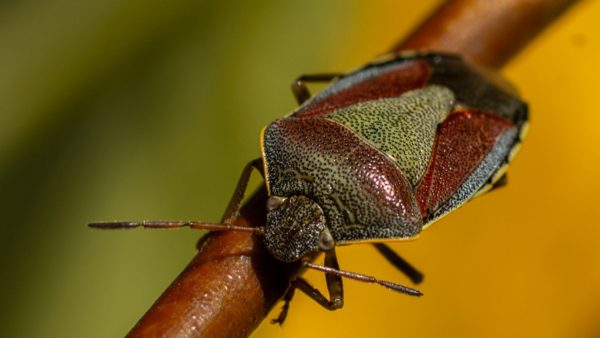(This is the online version of the paper booklet available at ticket offices in the Garden.)
Gardens cover a surprisingly large area in the UK, about a fifth the size of Wales. That’s a lot of potentially important habitat for wildlife, especially in urban areas. Up to a quarter of a city’s area may be made up of gardens and so, although each garden on its own is small, together they form a patchwork linking urban green spaces with nature reserves and the wider countryside.
Some would say that gardens, sympathetically managed for wildlife in the city, provide a haven for many more species than that provided by the countryside where intensive agriculture dominates and only small fragmented and shrinking habitats remain.
This trail will take you around the Botanic Garden from the viewpoint of the wildlife that it supports, and hopes to inspire you to think of your garden as more than just a place for recreation, growing food or a place of beauty and relaxation, but also an essential wildlife refuge.
Download the Wildlife Friendly Gardening brochure.
Why Garden for wildlife?
 Wildlife is under threat; preventing its loss is probably as important an endeavour as preventing run away climate change. We are wholly dependent on the diversity of living organisms that we share this planet with, whether that be for pollination of our crops, regulation of our climate, or purification of our water, provision of food and medicine and wellbeing. Only healthy ecosystems can continue to deliver these free services and an ecosystem’s health is a function of its biodiversity. It’s not only the biodiversity in wilderness areas that needs our protection, its also the biodiversity in our back yard, as everything is connected.
Wildlife is under threat; preventing its loss is probably as important an endeavour as preventing run away climate change. We are wholly dependent on the diversity of living organisms that we share this planet with, whether that be for pollination of our crops, regulation of our climate, or purification of our water, provision of food and medicine and wellbeing. Only healthy ecosystems can continue to deliver these free services and an ecosystem’s health is a function of its biodiversity. It’s not only the biodiversity in wilderness areas that needs our protection, its also the biodiversity in our back yard, as everything is connected.
When we talk about garden wildlife, we include all invertebrates such as bees, dragonflies, earthworms, hoverflies, beetles, butterflies and moths, in addition to vertebrates such as bats, hedgehogs, birds, frogs and toads and grass snakes. Some garden wildlife may be considered much less desirable than others including species such as slugs, muntjac, rats and aphids against whom many of us will wage a constant battle. It’s how we wage this battle that is important if we want to ensure that beneficial wildlife is not caught in the cross fire.
Wildlife needs four things to thrive in a garden: water, food, shelter and a place to breed. If we are able to provide even some of these things, you will be benefitting the biodiversity on your doorstep. Plants are the foundation of the ecosystem and the greater the variety of plants in a garden the more wildlife species it will attract.
Help us keep track of the species using the Botanic Garden by photographing the species you spot and submitting your photo (along with the date taken and location in the botanic garden) to wildlife@botanic.cam.ac.uk or to our iRecord activity CU wildlife recording. Detailed guidance on how to use iRecord and our activity can be found here.














